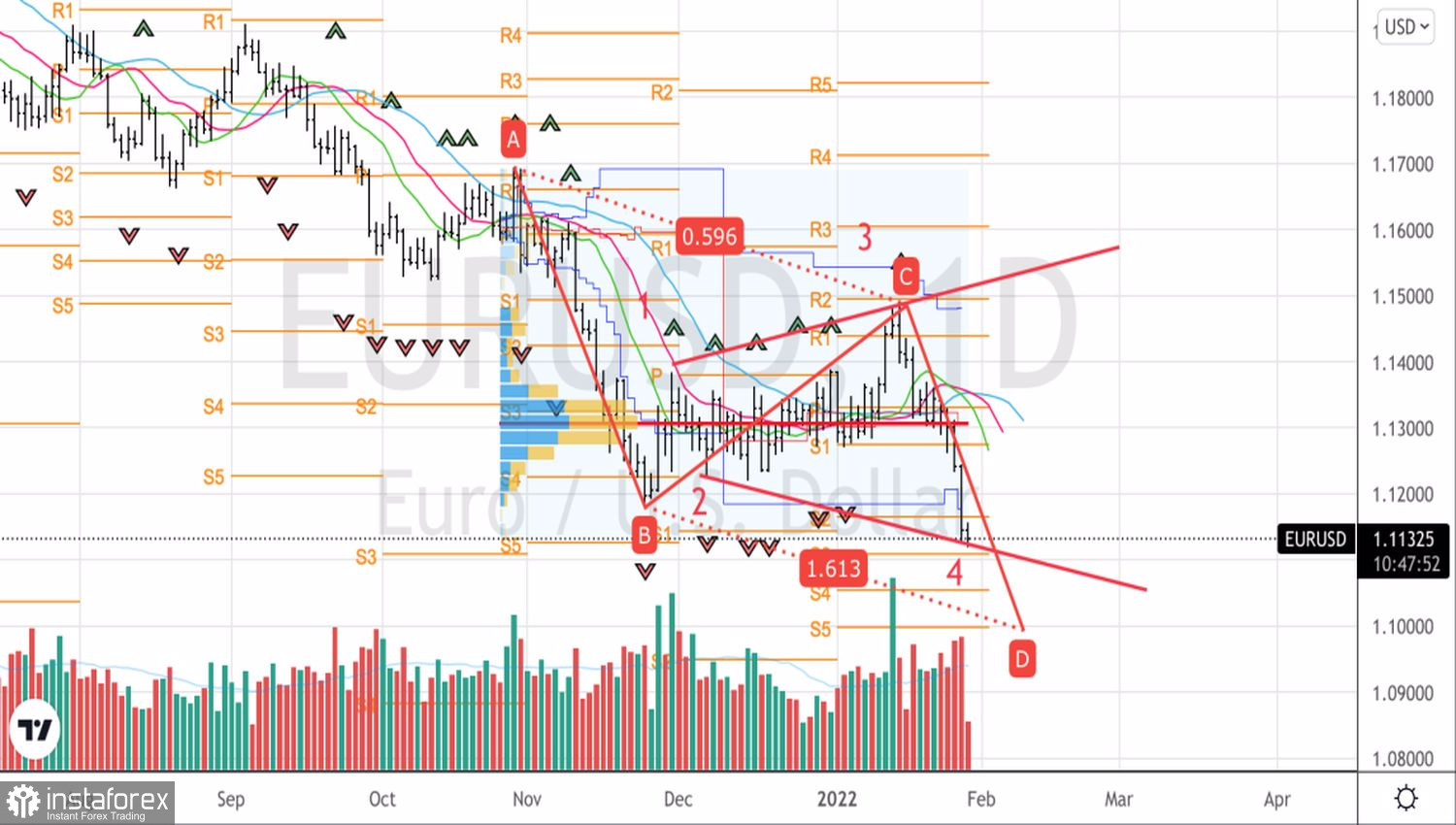Before January ended, divergence in monetary policy is back in vogue. The start of 2022 cast doubt on its effectiveness. The U.S. dollar started vaguely, reacting little to the rally in yields of Treasury bonds, and to the fall of U.S. stock indices, and the increase in the number of proposed acts of monetary restriction by the Fed in 2022 from three to four, and to rumors that the first of them will take place in March. Investors were worried that Fed Chairman Jerome Powell would not rush. They made a mistake, and the "bears" on EURUSD immediately rushed to the attack.
The fight against high inflation is now a priority. Not only at the White House, but also at the Fed. Much is at stake, and the Fed is ready to turn a blind eye to both the potential slowdown in the U.S. economy and the fall in stock indices. For Donald Trump, the S&P 500 was an indicator of the president's popularity; for Joe Biden, it is more important that the cost of living for an ordinary American does not grow as quickly as it is now. What is needed for this? Bring down inflationary expectations so that their further promotion does not become a self-fulfilling forecast. That is, it did not lead to a further increase in consumer prices. And the Fed is ready to raise the federal funds rate in almost every meeting.
Rising nominal yields of Treasury bonds and slowing inflationary expectations lead to an increase in real U.S. debt market rates, which is extremely bad for gold and good for the U.S. dollar. The latter, thanks to Powell, is ready to mark the best weekly gain against the euro in 7 months.
Dynamics of the dollar and the real yield of U.S. bonds

After the January FOMC meeting, the futures market is waiting for not 4, but 5 acts of monetary restriction from the Fed. Yes, derivatives still believe that the ECB will begin to tighten monetary policy in the autumn, but once European inflation begins to draw the very hump that Christine Lagarde and her colleagues are talking about, the forecasts will immediately shift to 2023. And this is a completely different story. The history of a serious weakening of the euro this year. The first call may be the release of data on the German CPI. According to forecasts by Bloomberg experts, the indicator will slow down from 5.2% to 4.2% in January. If so, then the meeting of the Governing Council on February 3 will be nominal. The "hawks" will fall silent, and the "bulls" on EURUSD are unlikely to wait for support.
A day later, the release of U.S. employment data for December will see the light of day. In the current environment, it is of particular importance. According to Powell, there is a lot of room for a rate increase that will not worsen the state of the labor market. The Fed chairman understands that an aggressive tightening of monetary policy is fraught with an increase in unemployment in the U.S. The main thing is not to go too far.
Technically, as was expected, the implementation of the false breakout pattern took the EURUSD quotes below the lower limit of the medium-term consolidation range 1.122-1.138. Formed from the levels of 1.1435 and 1.132, in accordance with the previous recommendations, we hold short positions and build up on rollbacks. The initial target is 1.1.
EURUSD, Daily chart






















